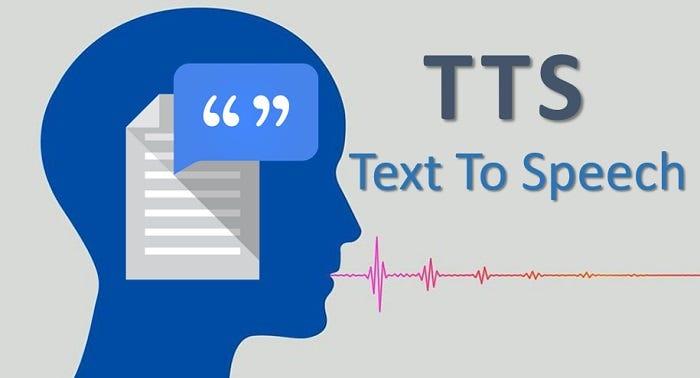Market Overview:
The Text to Speech Market Size has experienced significant growth in recent years, driven by technological advancements and increasing demand for accessibility solutions. TTS technology converts written text into spoken words, enabling various applications across multiple industries, including education, healthcare, automotive, and entertainment. The market's expansion is fueled by the growing adoption of smart devices, the rise of artificial intelligence (AI), and the need for assistive technologies for visually impaired and dyslexic individuals. As TTS systems become more sophisticated, delivering natural and human-like speech, their integration into everyday devices and services continues to rise.
Major Market Players:
The Text to Speech Market is highly competitive, with several key players driving innovation and growth. Prominent companies in the market include Google, Amazon, IBM, Microsoft, and Nuance Communications. Google’s TTS services, part of its Cloud Text-to-Speech offerings, leverage deep learning to produce natural-sounding speech. Amazon Polly, another leading service, uses advanced deep learning technologies to synthesize lifelike speech. IBM’s Watson Text to Speech provides customizable and high-quality voices for various applications. Microsoft Azure’s TTS services are part of its comprehensive AI and cognitive services suite. Nuance Communications, known for its Dragon software, continues to lead in the healthcare sector, offering specialized TTS solutions for medical professionals.
[PDF Brochure] Request for Sample Report:
https://www.marketresearchfuture.com/sample_request/21388
Market Drivers:
Several factors are driving the growth of the Text to Speech Market. One of the primary drivers is the increasing demand for content accessibility. As organizations strive to make their digital content accessible to all users, including those with visual impairments or reading difficulties, TTS technology becomes essential. The rise of smart speakers and virtual assistants, such as Amazon Echo and Google Home, has also spurred demand for advanced TTS solutions. These devices rely heavily on TTS technology to interact with users, deliver information, and perform tasks. Furthermore, the proliferation of e-learning platforms and online education has boosted the adoption of TTS in educational tools, providing an inclusive learning environment for students with diverse needs.
Market Restraints:
Despite its growth, the Text to Speech Market faces several challenges. One significant restraint is the high cost of developing and implementing TTS systems. Creating natural and accurate speech synthesis requires extensive research, sophisticated algorithms, and considerable computational power, which can be costly. Additionally, concerns about data privacy and security pose challenges, especially as TTS systems often process sensitive information. Users and organizations are increasingly cautious about how their data is used and stored, necessitating robust security measures. Another challenge is the variability in speech quality and language support. While TTS technology has advanced significantly, ensuring consistent quality across different languages and dialects remains a complex task.
Market Segmentation:
The Text to Speech Market can be segmented based on type, deployment mode, application, and region. By type, the market is divided into software and services. Software solutions include TTS engines and APIs that developers integrate into applications, while services encompass cloud-based TTS offerings. Deployment modes include on-premises and cloud-based solutions, with the latter gaining popularity due to its scalability and ease of use. Applications of TTS technology span various industries, including automotive, BFSI (banking, financial services, and insurance), healthcare, education, retail, and media and entertainment. Each sector leverages TTS to enhance user experience, improve accessibility, and streamline operations.
Regional Analysis:
Geographically, the Text to Speech Market is segmented into North America, Europe, Asia-Pacific, Latin America, and the Middle East and Africa. North America dominates the market, driven by the presence of major tech companies, high adoption of AI and machine learning technologies, and a strong focus on accessibility solutions. The region's advanced infrastructure and supportive regulatory environment further contribute to its leading position. Europe follows closely, with significant growth in countries like the UK, Germany, and France, where accessibility and digital inclusion are key priorities. The Asia-Pacific region is experiencing rapid growth, fueled by increasing internet penetration, the expansion of e-learning platforms, and rising investments in AI technologies. Countries like China, Japan, and India are at the forefront of this growth. Latin America and the Middle East and Africa are also showing potential, with growing awareness and adoption of TTS technologies in various sectors.
The text to speech market is on an upward trajectory, driven by technological advancements and increasing demand for accessibility and user-friendly digital experiences. Major players like Google, Amazon, IBM, Microsoft, and Nuance Communications are at the forefront of innovation, pushing the boundaries of what TTS technology can achieve. While challenges such as high development costs and data privacy concerns exist, the market's potential remains vast. With continued investment and advancements, TTS technology is set to become an integral part of our daily lives, enhancing communication and accessibility across the globe.
Browse In-depth Market Research Report:
https://www.marketresearchfuture.com/reports/text-to-speech-market-21388


